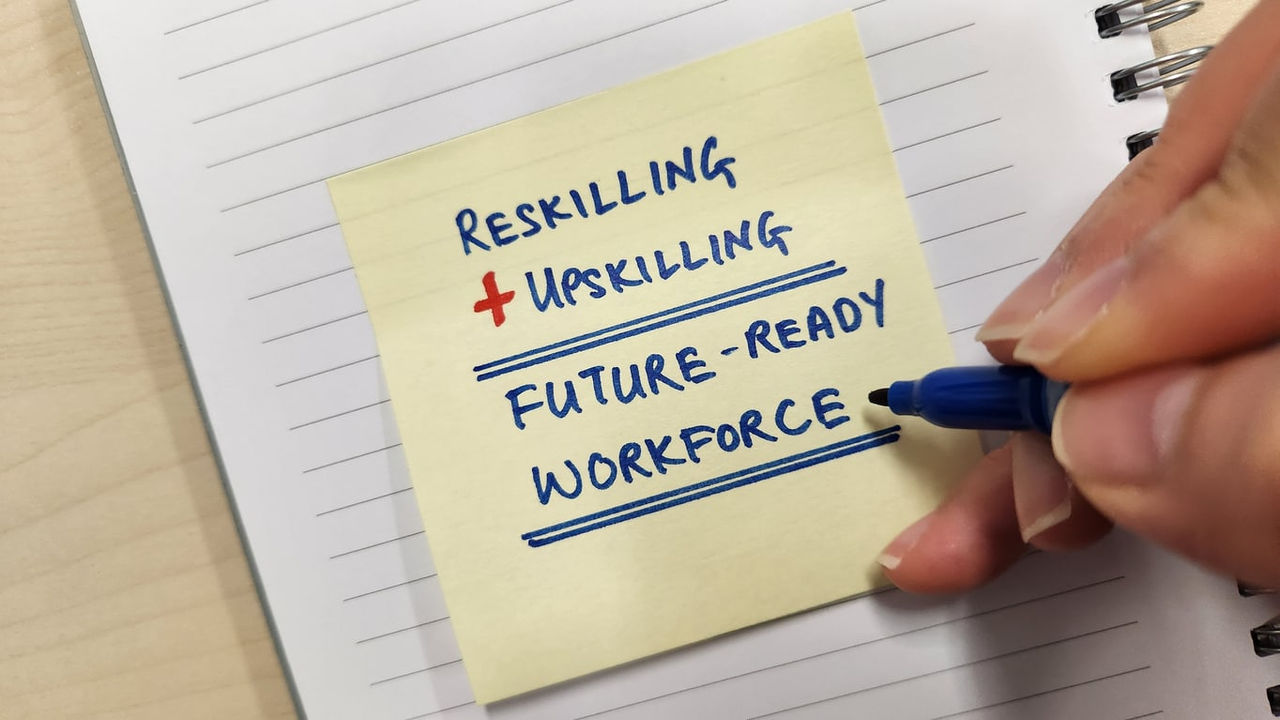Organizations must respond to the changing needs of the workforce by reskilling, upskilling or cross-skilling their employees to remain competitive, said Raymond Lee, founder and CEO of outplacement company Careerminds in Wilmington, Del. The World Economic Forum, he noted, forecasts that 97 million new jobs may emerge by 2025, even as 85 million jobs will be eliminated through automation.
"The last couple of years, we've been experiencing digital transformation. We've all seen this massive shift to hybrid and remote work. There's been business disruption. There's a ton of research out there that suggests the skill gap in our workforce is significantly widening," Lee said during his presentation, "Future-Proof Your Workforce Now," at the SHRM Talent Conference & Expo 2023 in Orlando, Fla.
He cited a McKinsey global report on future workforce needs that found 44 percent of 1,216 respondents surveyed in May 2019 said their organizations will face skills gaps by 2025. Another 43 percent reported having existing skills gaps.
Lee defined terms for the audience. Upskilling, he explained, is when an employee deepens a skill set within a particular job. A programmer working in Java for years would upskill to learn different programs such as C++ or Python. Reskilling involves learning to use skills in a different way, such as a salesperson moving into marketing. Cross-skilling involves the employee developing new skills that apply across different functions.
Lee pointed to IKEA, which focused on upskilling its customer service department as the company adopted an e-commerce model.
"They wanted to make sure the customer had the best experience, very similar to when they walked into the doors of IKEA," Lee said. Employees learned how to answer customer questions and engage with them online and over the phone, as well as respond to Twitter messages. The company designed predictive answers to provide customers with quick responses to their questions.
This approach, he said, "was wildly successful."
Lee also noted that employees who are learning new skills often want to stay with their employers.
"We still are faced with retention problems," he said. "How many people are struggling with keeping your employees at your company? They're leaving. It's a real issue, and there are a lot of great opportunities out there that employees are looking for," such as employers who prioritize training and development.
"The career projection of employees looks incredibly different today than it was 50 years ago," he pointed out. While at one time your company was your career, "now your skills are your career.
"Your ability to expand your employee skill set to add value your company, through their career, is not only going to improve their marketability, it's also going to improve your retention" because you are contributing to their skills development. He advised having informal conversations, or stay interviews, with employees about their careers by asking:
- "What's the one thing that you do in your job that keeps you logging in from home or coming through our doors every day?" When you learn what it is, don't change it, Lee advised.
- "What is the one thing you would like to change about your job?" The answer, Lee said, "is the one thing you're going to try to take hold of. That could be your upskilling, reskilling, cross-skilling" approach.
"You may have to address something beyond that, but the stay interview helps you stabilize your workforce," he noted. "Your manager can be part of it as well. You're not necessarily trying to uncover stuff that's not related to [the employee's] job. You're simply trying out find the one thing they like and the one thing they don't like" about their job.
Companies should encourage employees to step out of their comfort zone. Is there a new skill they can develop that will make them more valuable to the workforce and make the individual feel more fulfilled, more valued?
He recommended using the 20 percent rule: Scale the individual's job so he is devoting 80 percent of his time to his current job and 20 percent of his time toward training and development.
"You create the space and the energy to come to a conference, to get certified—whatever it is," giving the employee room to grow, Lee said. When the employee has perfected that skill, it becomes part of their 80 percent and time is set aside to develop another skill.
Skills development requires making a choice to commit to doing something different.
Lee worked in HR for nearly 20 years before leaving the corporate world to become an entrepreneur. He was "deathly afraid" of public speaking, he said, and shied away from learning that skill for 10 years until taking a one-day bootcamp in New York City. The author of Clocking Out: A Stress-Free Guide to Career Transitions (Society for Human Resource Management, 2020) knew the bootcamp was something he had to do, even though it involved making a video of himself giving a talk and then presenting live onstage at the end of the day, which he found agonizing and scary.
"If you're going to tap into a new skill or try to do something different, it requires a significant mindset shift," he pointed out. "Recognize you're going to make mistakes," as will your employees who are learning something new.
"You're going to [fail], but those mistakes and that learning is going to make you better [at] whatever it is you're trying to do."
Was this resource helpful?




